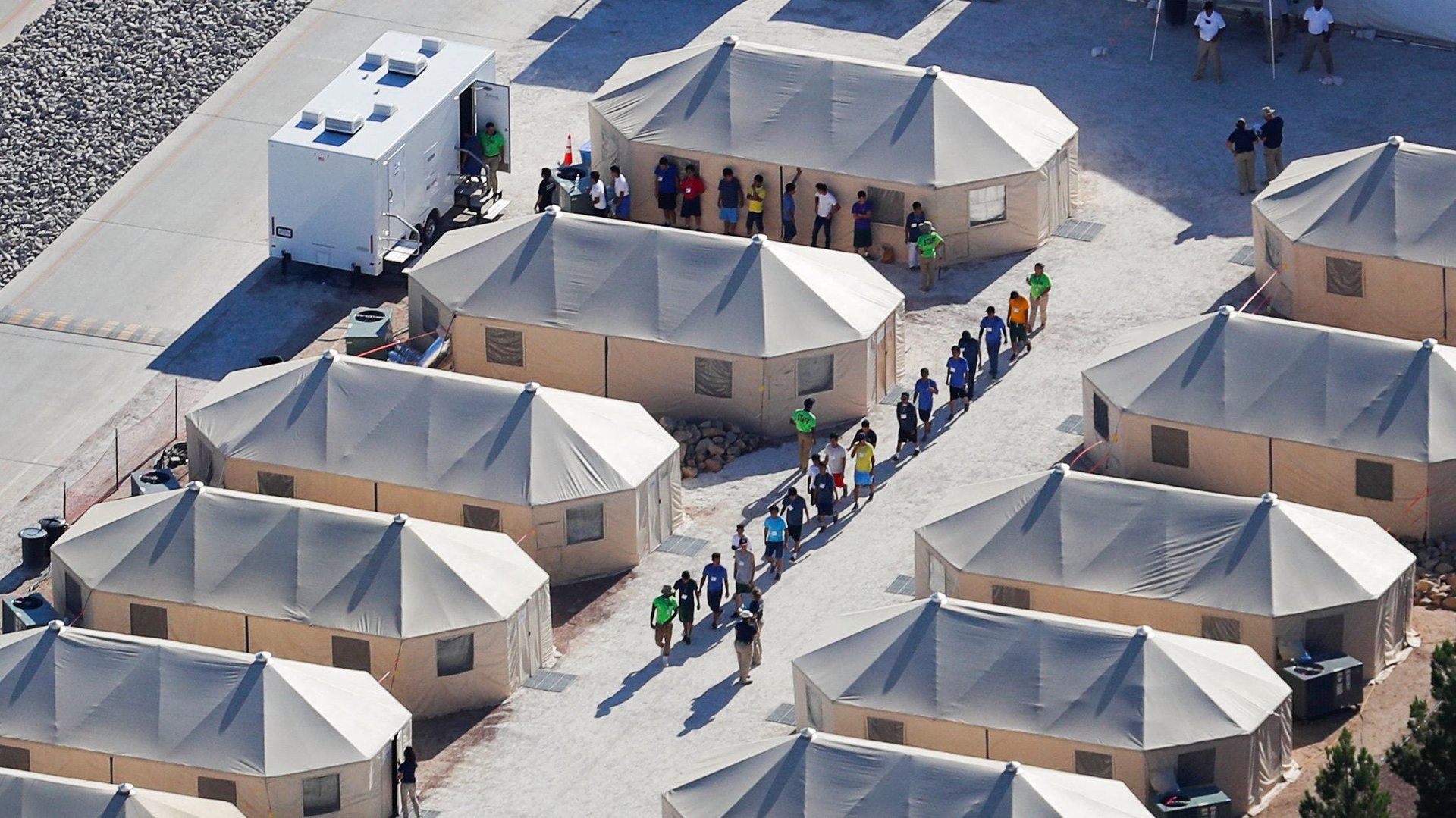The US has a shameful history of orphaning children
Donald Trump signed an executive order Wednesday putting an end to his widely-criticized practice of separating families at the US-Mexico border. The White House has faced an emotional backlash over its “zero tolerance” policy toward immigrants and refugees seeking asylum at the border, with many members of the public expressing shock that the government would enforce a practice so cruel as to forcibly tear children away from their parents.


Donald Trump signed an executive order Wednesday putting an end to his widely-criticized practice of separating families at the US-Mexico border. The White House has faced an emotional backlash over its “zero tolerance” policy toward immigrants and refugees seeking asylum at the border, with many members of the public expressing shock that the government would enforce a practice so cruel as to forcibly tear children away from their parents.
But this isn’t the first time in US history that such a thing has happened. The so-called “tender age” shelters at which children under the age of 13 are being held are eerily reminiscent of the golden age of American orphanages, which were shut down by progressive activists in the aftermath of World War II over concerns about the lasting trauma they inflicted on children.
The history of American orphanages
The first orphanage was established (pdf) in the United States in 1729. By 1850, there were 56; by 1900, there were an estimated 1,000 orphanages throughout the country, where an estimated 100,000 children lived. The conditions in the orphanages were horrific: Many children were placed as indentured servants in remote areas of the country, and the orphanages disproportionately targeted children of color, who were removed from their families at a much higher rate than white children.
One of the darkest and least-known features of the American orphanage system was that a majority of the children placed in those institutions were not actually orphans. Most had one or two living parents who were too poor to care for them, or had been deemed otherwise unfit to do so. Many of the children had been rescued from poorhouses, where conditions were often much worse. A review of the Protestant Orphan Asylum in St. Louis, Missouri from 1847 to 1869, for example, revealed that only 27% of the children had no parents.
In essence, this means that orphanages, both those run by private charities and by state and local governments, actively orphaned children, based on criteria like race or socio-economic status. In this way, they deprived children of their most important support system—their parents.
“When they defined who to admit, they defined who was an orphan,” said Matthew Crenson, a professor at Johns Hopkins University and author of The Invisible Orphanage: A Pre-history of the American Welfare System. “The institution in effect created the clientele by its admission decisions—kids with tubercular parents, kids with poor parents, kids with dead parents.”
In the early 1900s, progressive activists began a movement to shut down orphanages and send unaccompanied children to foster families instead of institutions. The consensus that emerged from this movement—namely, that all children deserved individualized care and education in a family setting—formed the basis of the child welfare policies that we know today. After WWII, orphanages slowly disappeared, thanks notably to the financial assistance provided to states and families by the passage of the Social Security Act in 1935.
But the so-called “tender age” shelters in Texas, which the AP reports house many children under the age of 5, are effectively a reprisal of the orphanages of the past.
What are “tender age” shelters?
Federal officials said on Tuesday that, since May, they have separated 2,342 children from their families, with some of these—estimated numbers are not available—being diverted to so-called “tender age” shelters.
There has been much confusion over the organization and intake policies of these shelters. The Department of Health and Human Services has released very little information about the welfare of the children. But volunteers and immigration lawyers who have entered the facilities have described scenes of chaos, confusion, and most of all, childhood trauma. Crenson told Quartz, “These are not kids who grew up in well-ordered, safe homes—they probably need help, they probably suffered, and I wonder whether the people who run these facilities have the willingness or the capacity to give them the treatment they need.”
As with the American orphanages of the 1800s, there are many opportunities for abuse and ill-treatment of children in “tender age” shelters. An investigation by The Texas Tribune and Reveal found that one of the shelters being used for children separated from their parents, the Shiloh Treatment Center, has received more than $25 million in grants since 2013, despite the fact that Texas officials have repeatedly found that it violated basic standards of care. A recent court filing with the California District Court alleges that children in the care of Shiloh were forcibly injected with psychotropic medications and told that they would not be released or see their parents unless they took the medication.
With Trump’s order, the policy of separating kids from their parents appears to be over—but the US immigration system has already turned more than 2,000 kids into ”unaccompanied alien children.” Their parents, fighting from detention facilities hundreds of miles away to find a way to get their children back, would certainly disagree.
This reporting is part of a series supported by a grant from the Bernard van Leer Foundation. The author’s views are not necessarily those of the Bernard van Leer Foundation.